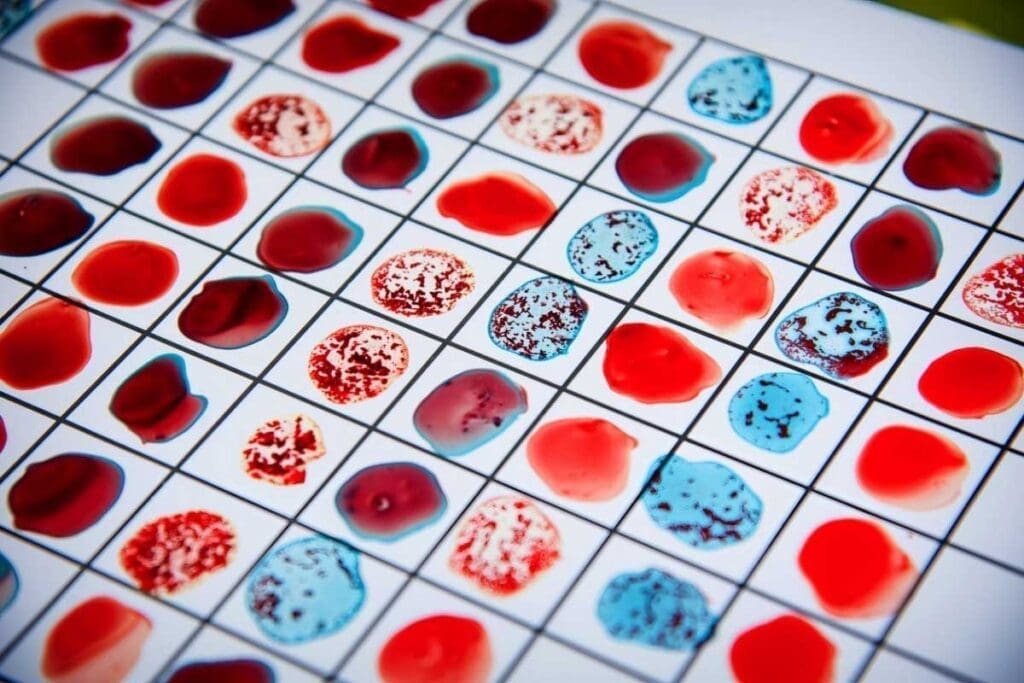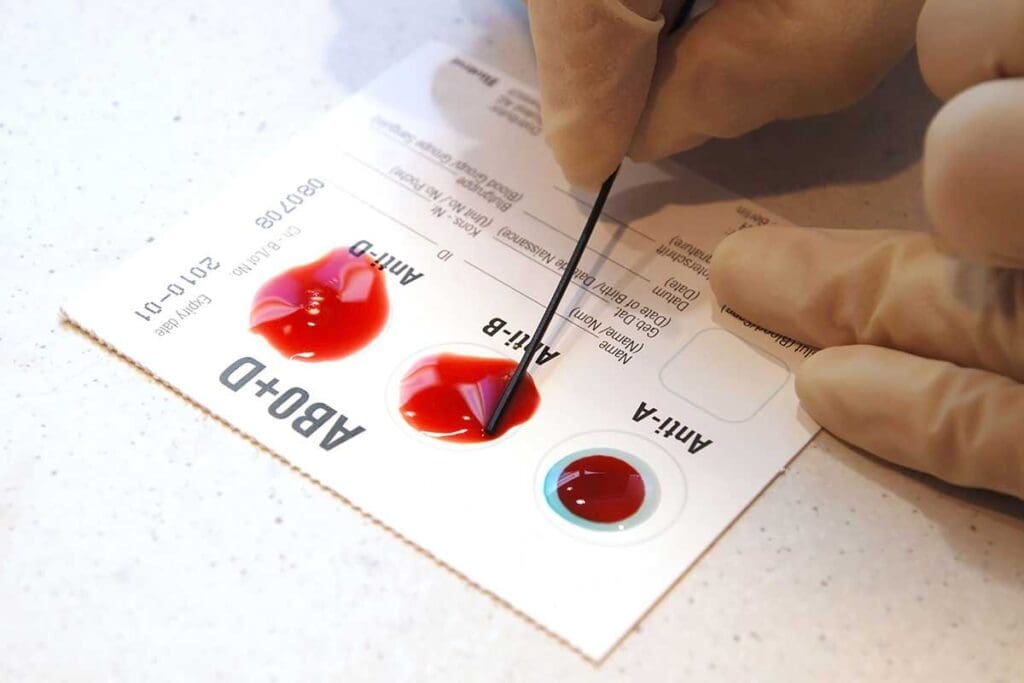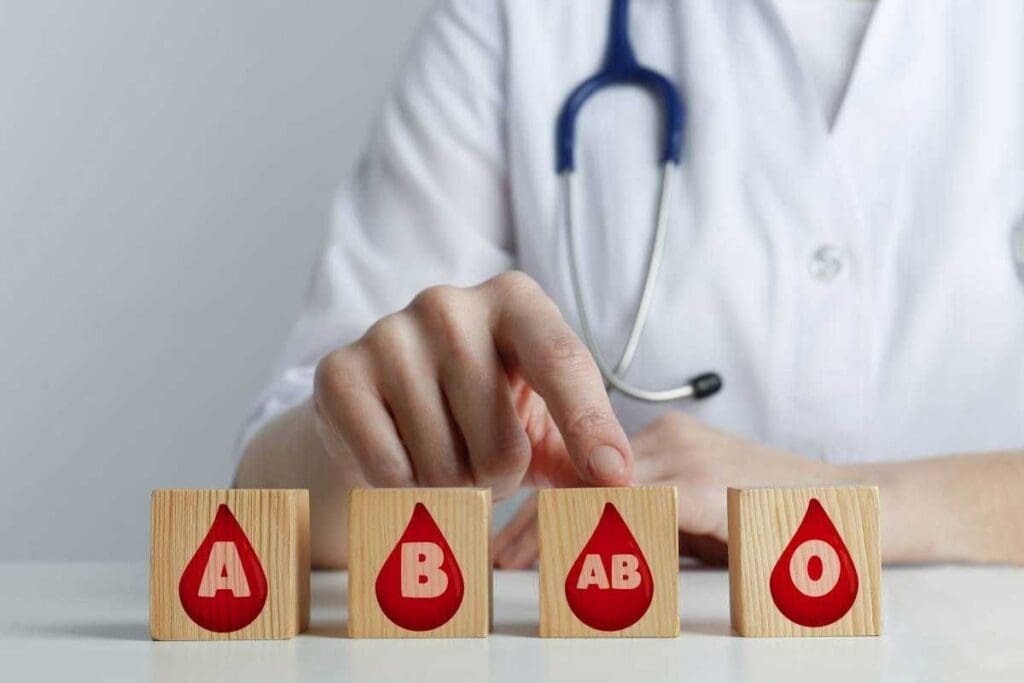Last Updated on November 17, 2025 by Ugurkan Demir
Knowing about blood type compatibility is key to safe blood transfusions and organ transplants. At Liv Hospital, we focus on top-notch care and putting patients first. A blood giving chart shows which blood types can give or receive blood safely.

Blood types are based on certain antigens. These are substances that can cause an immune reaction if they’re not part of the body. We’ll explain the blood giving chart and why it’s important for safe blood transfusions.
Blood types and their compatibility are key for doctors and patients. Blood transfusions are a big part of healthcare. Knowing about blood types is important for safe transfusions.
The ABO system groups blood into four types: A, B, AB, and O. These types are based on specific antigens on red blood cells. Antigens can cause an immune response, which is important for blood transfusions.
Here’s how it works:
The Rh factor is also key in blood compatibility. It’s about the RhD antigen on red blood cells. If you have it, you’re Rh positive; without it, you’re Rh negative. This, along with ABO blood groups, makes eight common blood types.
Knowing about the Rh factor is important. Rh incompatibility can cause serious reactions during transfusions. For example, an Rh-negative person getting Rh-positive blood might have a bad reaction.

| Blood Type | Can Donate To | Can Receive From |
| O+ | O+, A+, B+, AB+ | O+, O- |
| O- | O+, O-, A+, A-, B+, B-, AB+, AB- | O- |
| A+ | A+, AB+ | A+, A-, O+, O- |
| A- | A+, A-, AB+, AB- | A-, O- |
The table shows who can give and receive blood. O- is the universal donor because it can give to all. AB+ is the universal recipient because it can receive from all.
The blood giving chart is key for finding universal donors and recipients. Doctors need to make safe blood transfusions.
This chart helps us know which blood types are safe for anyone in emergencies.
“The universal donor concept has revolutionized emergency medicine.”
say transfusion experts.
Type O negative blood is the universal donor. It can be given to anyone. This is very important in emergencies when we don’t know the patient’s blood type.
A leading hematologist says,
“Type O negative blood is the lifeline in emergencies when the patient’s blood type is unknown.”
Type AB positive blood is the universal recipient. People with this blood type can get blood from any other type. They are perfect for certain medical needs.

Blood type distribution varies worldwide. In the United States, here’s how it breaks down:
Knowing these numbers helps manage blood supplies. It ensures hospitals have enough for transfusions.
Blood type compatibility tables are key in transfusion medicine. They help doctors choose the right blood for patients. This ensures the blood matches the patient’s needs. Here are eight important tables for safe blood transfusions.
The ABO blood group system is vital for red blood cell transfusions. It’s based on specific antigens on red blood cells.
| Recipient’s Blood Type | Compatible Donor Blood Types |
| A | A, O |
| B | B, O |
| AB | AB, A, B, O |
| O | O |
The Rh factor is also key in blood compatibility. Rh-negative blood is for Rh-negative patients. Rh-positive or Rh-negative blood is for Rh-positive patients.
| Recipient’s Rh Type | Compatible Donor Rh Types |
| Rh-positive | Rh-positive, Rh-negative |
| Rh-negative | Rh-negative |
A complete blood type donor chart shows compatible donors. It’s based on ABO and Rh types.
A complete blood type recipient chart shows safe blood types for recipients. It’s used to guide blood transfusions.
| Blood Type | Can Receive From |
| O- | O- |
| O+ | O-, O+ |
| A- | A-, O- |
| A+ | A-, A+, O-, O+ |
Blood type compatibility charts are key in transfusion medicine. They help healthcare providers make important decisions. These charts are a must-have in hospitals and transfusion centers every day.
Hospitals use blood donor charts for safe blood transfusions. When a patient needs blood, doctors check these charts fast. This is very important in emergencies.
By using blood receiver and donor charts, hospitals avoid bad reactions. This ensures patients get the best care.
Every year, nearly 16 million blood components are transfused in the U.S. This shows how important it is to have compatible blood. Blood match charts help manage this process well.
In emergencies, finding a patient’s blood type can be too slow. Then, doctors use donor-recipient blood charts to make quick decisions. These charts help find the closest match for a blood transfusion.
Being able to make fast decisions with blood type compatibility charts shows how far transfusion medicine has come. It highlights the need for good systems for blood donations and transfusions.
Transfusion medicine has gotten safer and more efficient. Modern blood donor recipient charts are part of a bigger system. This system includes advanced tests for blood compatibility.
These tests make blood transfusions safer. We’re moving towards better compatibility testing methods, like molecular typing and electronic cross-matching. These new methods add safety and precision to blood transfusions.
Knowing about blood type matching is key for safe blood transfusions. We’ve looked into how important blood type charts are. They help make sure medical care is the best it can be.
Hospitals use these charts to make critical decisions. As science grows, so do the charts. They keep up with new discoveries.
Staying up-to-date with blood transfusion medicine is important. It helps doctors give patients the best care. The blood giving chart is a big help in finding the right blood types for transfusions.
As we move forward in blood transfusion, knowing about blood types is more important than ever. Using charts and other tools helps save lives. It improves how well patients do after getting blood.
A blood giving chart shows which blood types can safely give or receive blood. It’s key for safe blood transfusions. Knowing blood types helps prevent bad reactions in medical settings.
The ABO blood group system divides blood into four types: A, B, AB, and O. Blood is also classified as Rh positive or negative. This results in eight common blood types.
The Rh factor tells if an immune system will react to certain blood types. Knowing this is key for matching donors and recipients.
Type O negative blood is the universal donor. It’s safe for all blood types, making it vital in emergencies.
Type AB positive blood is the universal recipient. People with this type can get blood from any ABO type.
Healthcare pros use these charts for blood transfusions. They ensure the right blood type is given, which is critical in emergencies.
There are several tables. These include ABO and Rh factor compatibility, donor and recipient charts, and more.
New technology makes blood transfusions safer and faster. It reduces the chance of bad reactions.
Knowing blood type compatibility is vital. It ensures safe transfusions, prevents bad reactions, and saves lives.
You can discover your blood type by donating blood or getting a blood test at a medical facility.
In the U.S., some blood types are more common than others. This varies across the country.
Blood donor recipient charts help healthcare pros make informed transfusion decisions. They show compatibility rules for red blood cells and plasma, ensuring the best patient outcomes.
Jeon, Y. W., Lim, J. Y., & Kim, H. (2023). Blood transfusion reactions: pathophysiology, detection, and management — a comprehensive review. BMC Hematology & Transfusion Medicine, 9, 102. https://pmc.ncbi.nlm.nih.gov/articles/PMC9144124/
Subscribe to our e-newsletter to stay informed about the latest innovations in the world of health and exclusive offers!